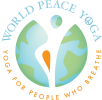Posture Practice - Going Deeper
Anatomy - Going Deeper
Healing Modalities
Stress Management
Breathwork - Going Deeper
Meditation - Going Deeper
Mindfulness
Subtle Body/Energy - Going Deeper
Yoga as a Business/Lifestyle - Going Deeper
Yoga Philosophy - Going Deeper
Plant-Sourced Living - Going Deeper
Arm Balances and Inversions Review
Alignment
- In Crow Pose, what is the ideal placement of the knees, and what positioning of the chin is helpful for balance?
- Knees are as high up as possible on the backs of or outsides of the upper arms. Chin is lifted and gaze is forward.
- Describe the most stable and safe alignment of the elbows, neck, and chin in Shoulder Stand.
- Elbows in as close as possible, chin lifted slightly away from chest to give more length and space to the neck.
- What joints are to be stacked in Supported Headstand and how much weight is on the head?
- Stack the shoulders, hips, knees, and ankles for a fully lifted headstand. 0-10% of the weight is on the head.
Anatomy
- What major muscles are engaging in both Crow Pose and Plank Pose?
- Core, shoulder, and arm muscles.
- What major muscles are being stretched in Plow Pose?
- Back side of the body – hamstrings, calves, glutes, muscles along the back such as the erector spinae.
- In addition to the core, the muscles around what joints are integral to supporting the body in Supported Headstand?
- Shoulders and wrists.
Assists
- How might one assist a student in Shoulderstand whose hips are lifted and legs are extended, but elbows are wide?
- Stand at the back side of the student. With consent, while holding the ankles, bring your feet around their elbows and walk them in while gently lifting the legs up. (Note, this should not be done on anyone with shoulder issues or who is not able to stack the hips over the shoulders.)
- How might one assist a student in Supported Headstand who is attempting to lift the feet off the ground for the first time?
- Stand at the back of the student (as a wall) and hold their hips, bringing your legs to their back for support if needed as they might slowly lift a foot. Watch the angle of their neck to be sure it isn’t rounded and their chest isn’t collapsed. Have them adjust before trying to lift off the ground.
- How might one assist a student in Crow Pose?
- Stand in front of the student’s head, and, with consent, bring your hands to their hip creases and bend your knees so they are available to support their shoulders. Use caution as they may not have the upper body strength to support themselves on their own. Let them test how much weight they can support.
Props
- What prop may help a student get the hips higher in Crow Pose?
- A block under their feet.
- How might one use a blanket to create more space for the neck in Shoulderstand?
- The blanket is to be under the upper back, NOT under the neck.
- What prop may help a student who is feeling fearful when practicing an arm balance?
- A blanket or bolster in front of them.
Modifications
- Describe some modifications and/or variations of Shoulderstand.
- Lift legs and keep hips down; elevated the sacrum with a block and lift legs; lift legs and support back with hands while keeping the hips somewhat flexed (half shoulderstand); lift legs and support back with hands while working to stack hips over shoulders and knees/ankles over hips; legs up the wall.
- Describe some modifications and/or variations of Headstand.
- Variations: Head and forearms down with knees down; head and forearms down with knees lifted; head and forearms down with knees lifted and feet walking in; head and forearms down with one foot lifted and knee to chest; head and forearms down with both feet lifted and knees to chest; head and forearms down with legs extended to sky; tripod arms.
- Modifications: using headstand stool to keep pressure off of neck; tripod arms with three blocks stacked under each shoulder and at the wall.
- How might one modify Crow Pose for someone with wrist issues?
- Practice Crow Pose lying on the back.
Sequencing
- What two sets of joints should be warmed up/healthy before practicing arm balancing poses?
- Wrists and shoulders.
- What poses (in English) help open the shoulder girdle for Supported Headstand?
- Cowface Pose, Eagle Pose, Downward Facing Dog, Puppy Pose.
- What counter pose for Shoulderstand offers relief from any tension that may have built up tension in the back of the neck?
- Fish Pose.
